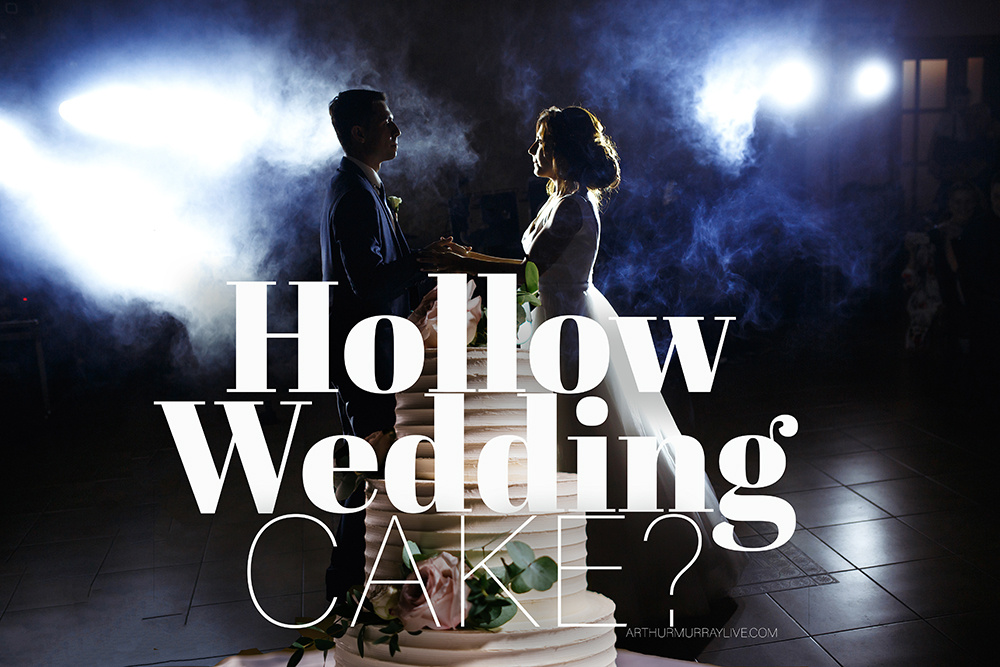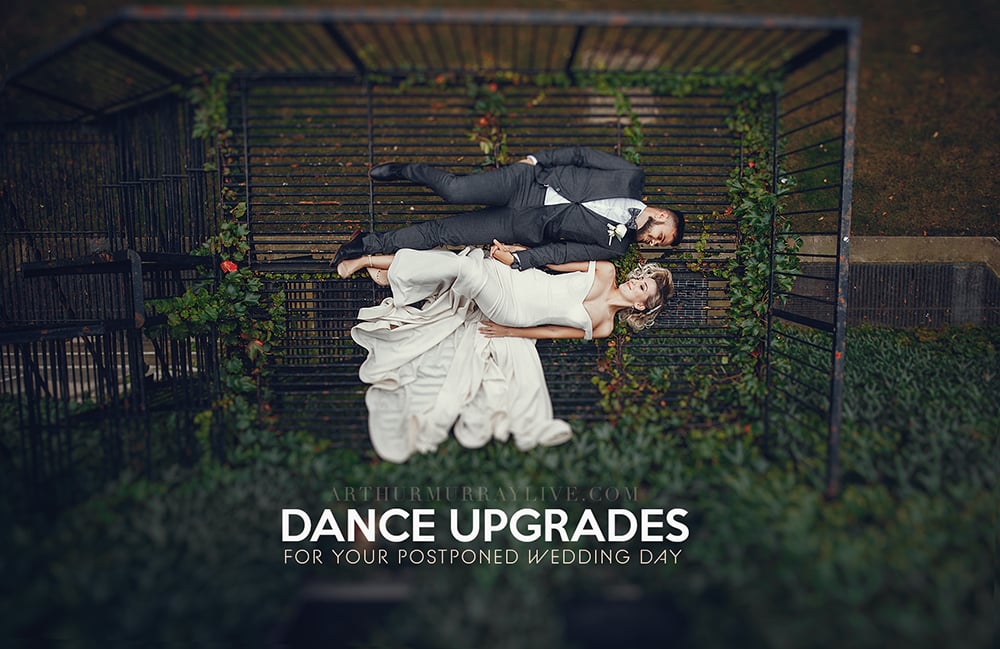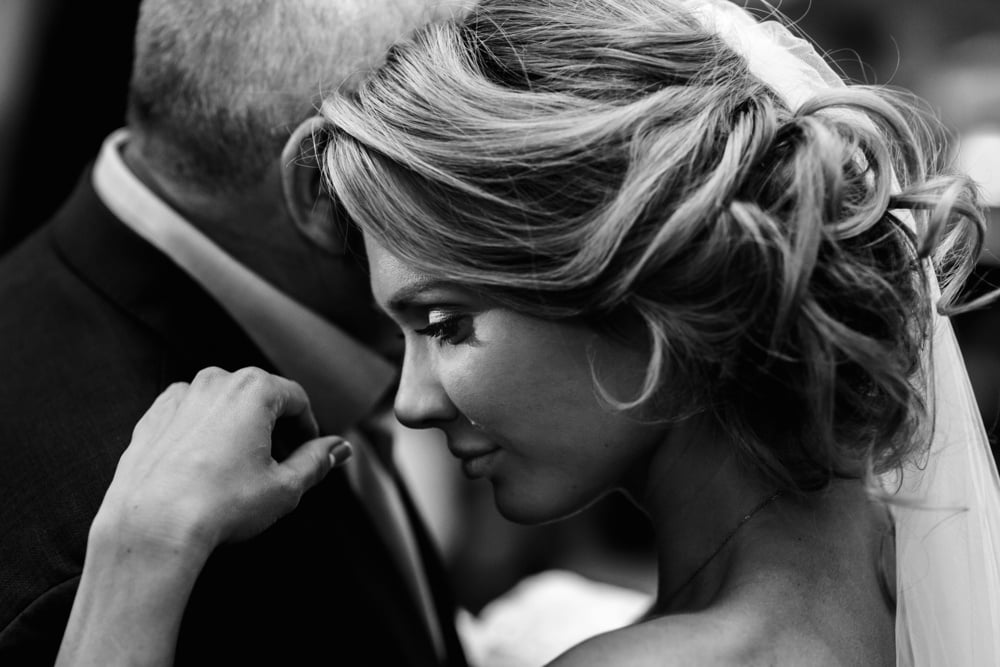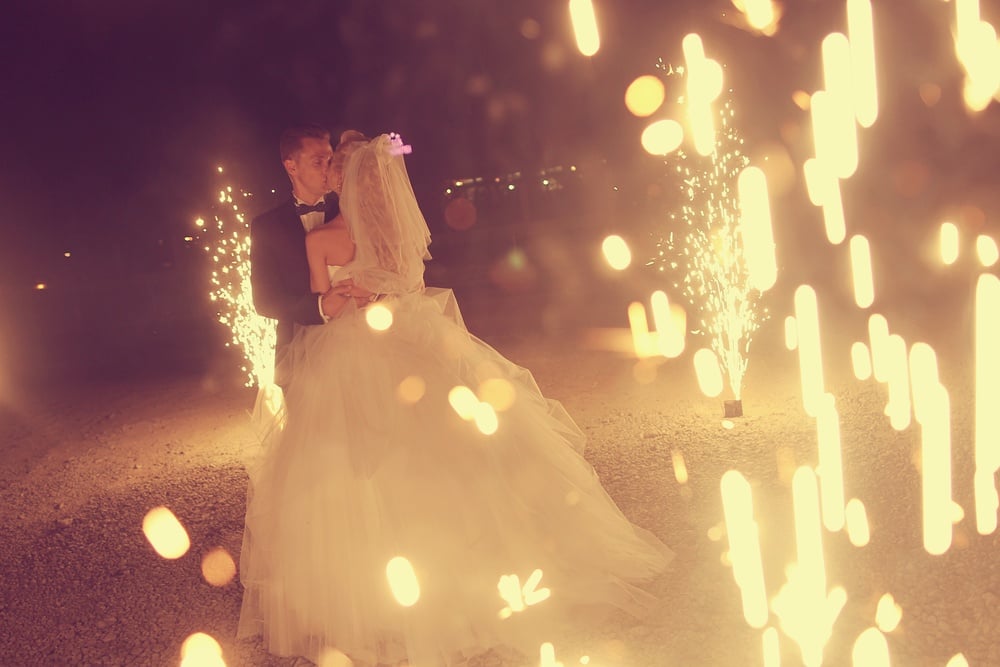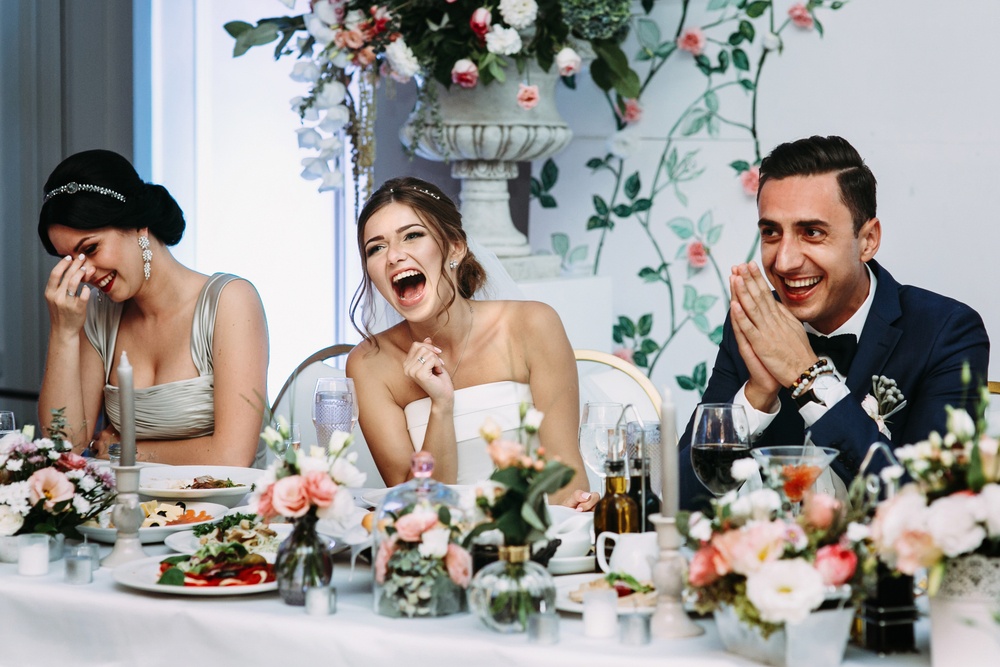Would you pay big money for a hollow wedding cake?
Just imagine, a gorgeous, three tiered, frosting covered masterpiece, but with no cake on the inside. Even better, it's a stack of hat boxes, covered in royal icing.
Hard pass.
Well, when it comes to your wedding dance, there are a lot of couples that opt for the "hollow wedding cake" and don't even realize it. So let's explore what that is, how to avoid it, and the strategic upgrades you can make for your wedding.
The "Hollow Wedding Cake" Dance
Short answer: All show, no substance. The wedding cake equivalent of a hollywood movie set, a believable exterior but not much on the interior.
The First Dance is always the biggest, and most obvious, dance obligation of your wedding. It's the tradition, it's an expectation, and these days it's very chic to take dance lessons to make that First Dance something special.
However, if your First Dance is just an elaborate performance piece, with no other dance skills in the reception, you have the unfortunate Hollow Wedding Cake Dance.
But why?
A great, choreographed First Dance can create the impression of great dance skills - it's the icing. But if that still leaves you on the sidelines, or dancing like Elaine on Seinfeld, you could be giving off Hollow Wedding Cake vibes.
6 Ways to Avoid the Hollow Wedding Cake First Dance

1. Start Early
How early? The real answer is as early as possible. The sooner that you get started, the more natural and confident you will look and feel.
When is a good time to plant a tree? Twenty years ago. The second best time? Today. Use the same logic for your dancing. Even if your wedding is a year from now, that's a huge win when it comes to muscle memory.
Why? Because when muscle memory is calibrated the right way, it relieves the burden of your mental processing power. The less muscle memory that you've developed, the more strain you put on your brain the day of your wedding.
The advantage: Look like a dancer and not just someone who learned "a dance."
2. Strategic Reception Dances
But why should I learn any other dances? Because your first dance is about 1% of your wedding reception. Being able to dance during the majority of your celebration is easier than you think.
Won't the extra information negate the mental effort to learn my first dance? No. In fact, a strategic variety of reception dances can improve your first dance and accelerate the learning process.
What dances should I add for the reception? You want to have at least one slow, medium, and fast tempo dance to cover anything the DJ or band might play.
Slow - Rumba is a great, all-purpose, slow dance. What the Waltz may lack in musical versatility more than makes up for in elegance and class. The great thing is that with the Arthur Murray system, you can learn them both in the same time it would take to learn just one.
Medium - Most of your reception music will be in this medium tempo range. Swing and Cha-Cha have this covered for anything from pop, club, and rock music. On the elegant side, the Foxtrot is one of the most popular wedding reception dances. It's easy, social, and classy.
Fast - If we had to restrict this to just one dance, you can't go wrong with the Merengue. It's the perfect up-tempo dance and any dance student can easily get anyone from their siblings to their grandparents dancing it within a few beats of the music. Not to mention, every conga line is just a Merengue with a large group of people following behind.
3. Plan for the Dance, not the Song
Bottom line: Stay open to the music and you have a wealth of dances to choose from
We understand that there are some songs that have a special significance to our students. As wedding dance professionals, your teachers will work to find a dance to fit the song and timeframe you're operating under.
Unfortunately, with time being so precious in the development of your dancing, it can be the song that is slowing down the process.
How so?
There are some songs that are beautiful and yet, ironically, tricky to dance to. Sometimes our students will see a type of dance on television and ask for that to fit into a particular song - which is about as easy as swapping in a gasoline engine for your Tesla.
It can be done, but can be more time consuming.
So what's the solution? Pick a few different songs. If you assemble a playlist of potential first dance songs, your teacher can help you find the one that corresponds to the dance that will make you look and feel the best.
Even better, you can describe the mood you want to set for your guests or the story you want to share with your first dance and that will give your teacher plenty to work with and recommend.
4. Learn to Lead and Follow
Bottom line: If learning a choreographed dance is like memorizing the words to a song, learning to lead and follow is like learning to sing on key.
Having a scripted first dance is a great way to go, but the key to looking like you know what you're doing is to learn... well... to know what you're doing. That isn't meant to sound trite and it is not as tricky as it might seem.
Leading and following allows a dance couple to make unscripted decisions on the dance floor that build a non-verbal form of dance communication for the pair. In the process of learning this essential skill, the leaders learn to be more bold and decisive with their movements, and the followers learn to be sensitive and responsive to their decisions.
When the leader has the ability to send signals and the follower develops the ability to receive them, you make the seismic shift from knowing dance steps to knowing how to dance together.
5. Do All the Things
Bottom Line: There are other formal wedding reception dances and you should do them all.
Why?
Remember the Hollow Wedding Cake? Keeping the good dance stuff for yourself and not sharing that with the important members of your family can feel a little one sided.
So what do I do?
Remember those easy reception dances? Plan on a Father/Daughter dance - Foxtrot is a no-brainer. Plan on a Mother/Son dance - Waltz is a lovely choice.
Is that all?
Take it further with your wedding party. Remember that fast dance that's super easy? The Merengue. You can turn your wedding party into a Merengue Conga line. With some more time, you could make it a Salsa.
What about the rest of my guests?
Keep the Merengue party going and try a "Snowball Dance." This is where each dance couple in your bridal party splits up and grabs two more partners from the audience. Then after another 30 seconds you repeat it until everyone is on the dance floor. Let your DJ know in advance so they can assist in the ultimate wedding reception dance party strategy.
6. Plan Your Next Wedding
Let's clarify.
You are now a dance couple and your first big dance event is your own wedding reception. (Read that one more time just so it can register.)
So, after all that work, is this your one-and-done moment of dancing? There might be some things that you don't plan on doing again after the wedding - like wearing your wedding dress or spending 19 hours on your registry - but dancing shouldn't be placed on the "one-and-done" list.
Instead... plan the next wedding. Wether that's a wedding for a friend from college, a Caribbean cruise where you dance like it is your wedding, or an Arthur Murray event where you use your social dancing skills, you need to plan the next one (and the next one).
Final Thought
Learning to dance together puts you in an elite class of couples. There aren't many out there that can say they can go out for dinner and dancing these days.
You've worked hard, taken a big step outside your comfort zone, and have a legitimate hobby together. The wedding was the catalyst, the reception is the first return on your investment, but every event afterward is like a bonus dividend.
You didn't fall in love with your soon-to-be spouse just purely on the exterior alone. As the old saying goes, "it's what's on the inside that counts." The same can be said about your wedding dance.
No Hollow Wedding Cake. Not you. Give yourself, and your guests, a dance experience that goes beyond the surface and worthy of seconds.



